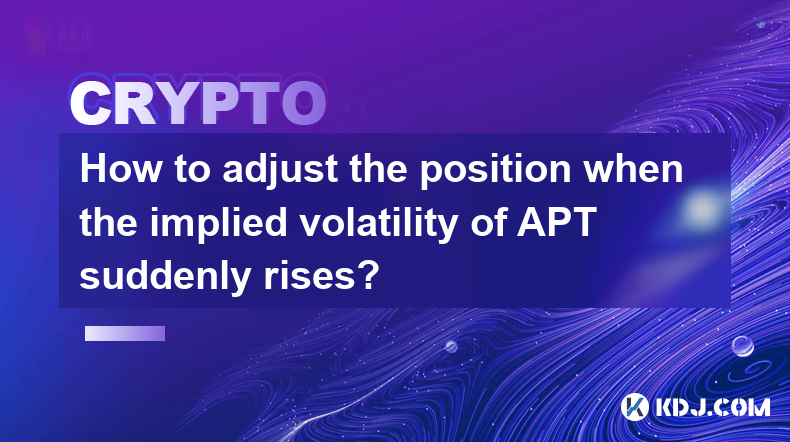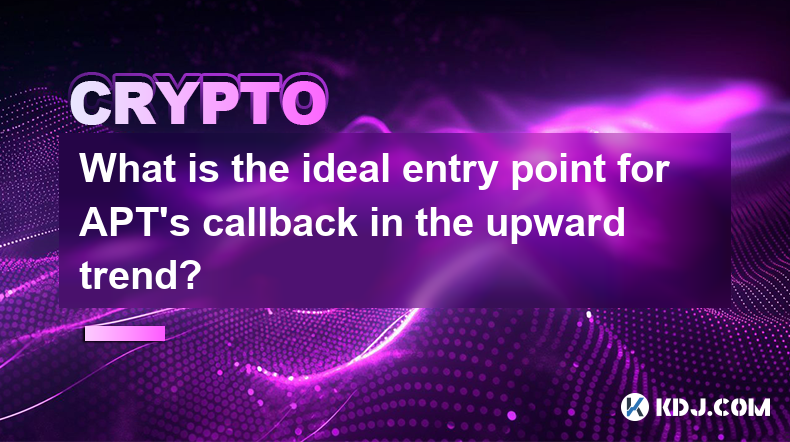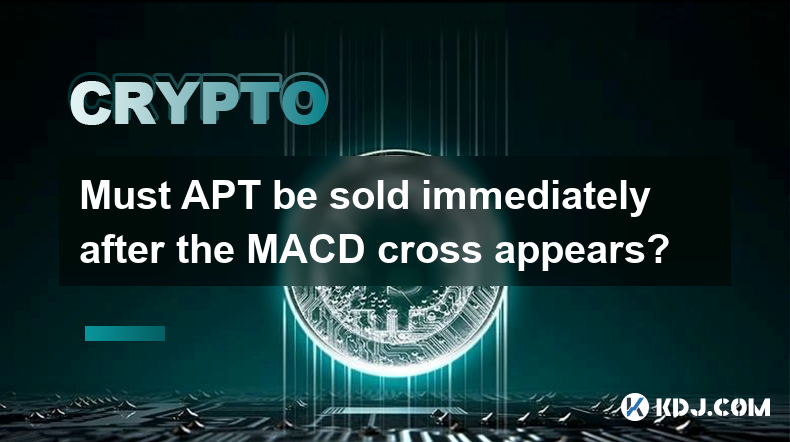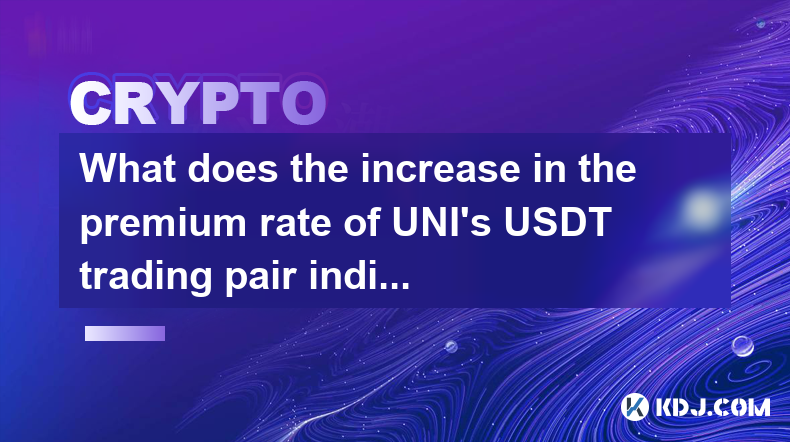-
 Bitcoin
Bitcoin $92,857.3496
-1.03% -
 Ethereum
Ethereum $1,750.4828
-2.45% -
 Tether USDt
Tether USDt $1.0005
0.05% -
 XRP
XRP $2.1885
-2.18% -
 BNB
BNB $597.4359
-1.69% -
 Solana
Solana $149.8729
-1.30% -
 USDC
USDC $1.0000
0.01% -
 Dogecoin
Dogecoin $0.1788
-0.25% -
 Cardano
Cardano $0.7255
3.02% -
 TRON
TRON $0.2464
0.28% -
 Sui
Sui $3.2757
10.22% -
 Chainlink
Chainlink $14.8489
-0.12% -
 Avalanche
Avalanche $22.0620
-1.11% -
 Stellar
Stellar $0.2755
2.43% -
 UNUS SED LEO
UNUS SED LEO $9.2218
1.65% -
 Toncoin
Toncoin $3.1533
-0.18% -
 Shiba Inu
Shiba Inu $0.0...01341
-1.13% -
 Hedera
Hedera $0.1856
1.66% -
 Bitcoin Cash
Bitcoin Cash $349.6685
-3.25% -
 Polkadot
Polkadot $4.1453
0.80% -
 Litecoin
Litecoin $82.8054
-1.43% -
 Hyperliquid
Hyperliquid $17.9889
-3.15% -
 Dai
Dai $1.0001
0.00% -
 Bitget Token
Bitget Token $4.4327
-1.75% -
 Ethena USDe
Ethena USDe $0.9995
0.02% -
 Pi
Pi $0.6476
-1.41% -
 Monero
Monero $227.9399
-0.28% -
 Uniswap
Uniswap $5.8086
-3.78% -
 Pepe
Pepe $0.0...08567
-4.18% -
 Aptos
Aptos $5.4495
1.50%
What is a Bitcoin payment platform and how does it work?
Bitcoin payment platforms enable secure transactions, offering wallet functionality, exchange services, and robust security measures like 2FA and encryption.
Apr 21, 2025 at 09:28 am

A Bitcoin payment platform is a digital service that enables users to send, receive, and manage Bitcoin transactions. These platforms facilitate the use of Bitcoin as a payment method for goods and services, making it easier for businesses and individuals to integrate cryptocurrency into their financial operations. Understanding how these platforms work involves exploring their key features, the process of making transactions, and the security measures they employ.
Key Features of Bitcoin Payment Platforms
Bitcoin payment platforms come equipped with several essential features that enhance their usability and functionality. One of the primary features is the wallet functionality, which allows users to store their Bitcoin securely. These wallets can be integrated into the platform or linked from external sources. Another crucial feature is the transaction processing system, which handles the sending and receiving of Bitcoin. This system ensures that transactions are processed quickly and efficiently.
Additionally, many Bitcoin payment platforms offer exchange services, allowing users to convert Bitcoin to other cryptocurrencies or fiat currencies. This feature is particularly useful for businesses that need to manage their cash flow in multiple currencies. User interfaces are also a significant aspect of these platforms, designed to be user-friendly and accessible to both novice and experienced users. Lastly, security features such as two-factor authentication, encryption, and multi-signature wallets are standard to protect users' funds and personal information.
How to Make a Bitcoin Transaction on a Payment Platform
Making a Bitcoin transaction on a payment platform involves several straightforward steps. Here's how you can do it:
- Log into your account: Access your Bitcoin payment platform account using your credentials.
- Select the 'Send' option: Navigate to the section of the platform where you can initiate a transaction.
- Enter the recipient's Bitcoin address: Input the Bitcoin address of the person or business you want to send Bitcoin to. Double-check the address to avoid errors.
- Specify the amount: Enter the amount of Bitcoin you wish to send. Some platforms may allow you to convert this amount to fiat currency for easier understanding.
- Review and confirm the transaction: Check all the details of the transaction, including any fees that may apply. Once you are satisfied, confirm the transaction.
- Wait for confirmation: Bitcoin transactions need to be confirmed by the network, which can take anywhere from a few minutes to an hour, depending on network congestion.
Receiving Bitcoin on a Payment Platform
Receiving Bitcoin on a payment platform is equally simple. Here's how you can do it:
- Log into your account: Access your Bitcoin payment platform account.
- Select the 'Receive' option: Navigate to the section where you can receive Bitcoin.
- Generate a new Bitcoin address: Most platforms will generate a new Bitcoin address for each transaction to enhance security. Copy this address.
- Share the address with the sender: Provide the Bitcoin address to the person or business that will be sending you Bitcoin.
- Wait for the transaction to be confirmed: Once the sender initiates the transaction, you will need to wait for it to be confirmed by the Bitcoin network.
Security Measures in Bitcoin Payment Platforms
Security is a paramount concern for Bitcoin payment platforms. These platforms employ various measures to protect users' funds and personal information. Two-factor authentication (2FA) is a common security feature that adds an extra layer of protection by requiring a second form of verification, such as a code sent to your mobile device, when logging in or making transactions.
Encryption is another critical security measure. Data transmitted between your device and the platform is encrypted to prevent unauthorized access. Multi-signature wallets are also used, requiring multiple signatures (or approvals) before a transaction can be processed, adding an additional layer of security.
Regular security audits and penetration testing are conducted to identify and fix vulnerabilities. Additionally, cold storage solutions are often used to store the majority of users' funds offline, reducing the risk of hacking. Insurance against theft or loss is another feature some platforms offer to provide further peace of mind to users.
Integration with Businesses
Bitcoin payment platforms are designed to be easily integrated into business operations. Many platforms offer plugins and APIs that allow businesses to accept Bitcoin payments directly on their websites or through their point-of-sale systems. This integration can be done in several ways:
- Direct integration: Businesses can use the platform's API to integrate Bitcoin payment processing into their existing systems. This typically involves adding a few lines of code to their website or payment processing software.
- Third-party plugins: Many e-commerce platforms, such as WooCommerce or Shopify, offer plugins that can be easily installed to accept Bitcoin payments.
- Point-of-sale (POS) systems: Some Bitcoin payment platforms provide POS solutions that can be used in physical stores to accept Bitcoin payments.
Once integrated, businesses can start accepting Bitcoin payments immediately. The platform handles the conversion of Bitcoin to fiat currency if needed, and the funds are typically deposited into the business's bank account within a few days.
Fees and Costs Associated with Bitcoin Payment Platforms
Using a Bitcoin payment platform comes with various fees and costs that users should be aware of. Transaction fees are charged for sending Bitcoin and are typically based on the speed of the transaction and the current network congestion. These fees are paid to miners who process and confirm transactions on the Bitcoin network.
Platform fees are another cost to consider. These can include fees for converting Bitcoin to other currencies, withdrawal fees, and sometimes even fees for maintaining an account. The specific fees vary from platform to platform, so it's essential to review the fee structure before choosing a service.
Merchant fees are relevant for businesses using Bitcoin payment platforms. These fees are charged for processing Bitcoin payments and can range from 0.5% to 2% of the transaction amount. Some platforms may also charge a flat fee per transaction.
Frequently Asked Questions
Q: Can I use a Bitcoin payment platform to buy goods and services online?
A: Yes, many online merchants and e-commerce platforms accept Bitcoin as a payment method. You can use a Bitcoin payment platform to send Bitcoin to these merchants in exchange for goods and services.
Q: Are Bitcoin payment platforms regulated?
A: The regulation of Bitcoin payment platforms varies by country. Some countries have specific regulations for cryptocurrency services, while others do not. It's important to check the regulatory status of a platform in your jurisdiction before using it.
Q: How can I choose the best Bitcoin payment platform for my needs?
A: When choosing a Bitcoin payment platform, consider factors such as security features, fees, user interface, customer support, and whether the platform supports the features you need, such as exchange services or business integration.
Q: Can I use a Bitcoin payment platform to send Bitcoin internationally?
A: Yes, Bitcoin payment platforms allow you to send Bitcoin to any Bitcoin address worldwide. This makes them an excellent option for international transactions, as they are typically faster and cheaper than traditional bank transfers.
Disclaimer:info@kdj.com
The information provided is not trading advice. kdj.com does not assume any responsibility for any investments made based on the information provided in this article. Cryptocurrencies are highly volatile and it is highly recommended that you invest with caution after thorough research!
If you believe that the content used on this website infringes your copyright, please contact us immediately (info@kdj.com) and we will delete it promptly.
- How to Invest in Bitcoin According to Former Goldman Sachs Executive
- 2025-04-25 01:30:12
- JACKBIT Emerges as the Best Bitcoin Casino for 2025, Praised for Its No KYC Policy and Instant Withdrawals
- 2025-04-25 01:30:12
- ruya Becomes the First Islamic Bank to Offer Bitcoin and Virtual Asset Investments
- 2025-04-25 01:25:12
- Bitcoin reserves on cryptocurrency exchanges have dropped to their lowest level in more than six years
- 2025-04-25 01:25:12
- Bitcoin Soars : Satoshi Nakamoto’s Colossal Fortune
- 2025-04-25 01:20:12
- Don't Miss BTFD Coin's FINAL100 Bonus and $0.0002 Entry—Presale Ends May 26
- 2025-04-25 01:20:12
Related knowledge

How to adjust the position when the implied volatility of APT suddenly rises?
Apr 24,2025 at 09:42pm
When the implied volatility of APT suddenly rises, it can significantly impact your trading positions. Adjusting your positions effectively requires a thorough understanding of the situation and a strategic approach. In this article, we will explore how to manage your positions when the implied volatility of APT increases unexpectedly. Understanding Imp...

Does the increase in net outflow of APT exchanges represent bullishness?
Apr 24,2025 at 06:57pm
The concept of net outflow of APT (Aptos) from exchanges and its potential correlation with bullish sentiment is a topic of interest within the cryptocurrency community. The net outflow refers to the volume of APT tokens being withdrawn from cryptocurrency exchanges, which can be interpreted as a signal of investor behavior and market sentiment. This ar...

What is the ideal entry point for APT's callback in the upward trend?
Apr 24,2025 at 11:50pm
In the world of cryptocurrency trading, identifying the ideal entry point for a token's callback in an upward trend is crucial for maximizing profits and minimizing risks. APT, or Aptos, is a relatively new player in the crypto market, and understanding its price movements and potential entry points can be challenging. This article delves into the facto...

Must APT be sold immediately after the MACD cross appears?
Apr 24,2025 at 07:43pm
The question of whether APT (Aptos) should be sold immediately after a MACD (Moving Average Convergence Divergence) cross appears is a common one among traders. The MACD is a popular technical indicator used to identify potential buy and sell signals in the cryptocurrency market. However, the decision to sell APT immediately after a MACD cross is not st...

What does the increase in the premium rate of UNI's USDT trading pair indicate?
Apr 24,2025 at 09:21pm
The increase in the premium rate of UNI's USDT trading pair is a significant indicator within the cryptocurrency market, reflecting various dynamics and sentiments among traders and investors. This phenomenon can provide insights into the perceived value, demand, and market conditions surrounding Uniswap's native token, UNI. In this article, we will exp...

What impact will large-scale on-chain transfers of UNI have on prices?
Apr 24,2025 at 09:56pm
Large-scale on-chain transfers of UNI, the governance token of the Uniswap decentralized exchange, can have significant impacts on its price. These impacts can be multifaceted, influenced by various factors such as market sentiment, liquidity, and the intent behind the transfers. This article will delve into the different ways in which large-scale on-ch...

How to adjust the position when the implied volatility of APT suddenly rises?
Apr 24,2025 at 09:42pm
When the implied volatility of APT suddenly rises, it can significantly impact your trading positions. Adjusting your positions effectively requires a thorough understanding of the situation and a strategic approach. In this article, we will explore how to manage your positions when the implied volatility of APT increases unexpectedly. Understanding Imp...

Does the increase in net outflow of APT exchanges represent bullishness?
Apr 24,2025 at 06:57pm
The concept of net outflow of APT (Aptos) from exchanges and its potential correlation with bullish sentiment is a topic of interest within the cryptocurrency community. The net outflow refers to the volume of APT tokens being withdrawn from cryptocurrency exchanges, which can be interpreted as a signal of investor behavior and market sentiment. This ar...

What is the ideal entry point for APT's callback in the upward trend?
Apr 24,2025 at 11:50pm
In the world of cryptocurrency trading, identifying the ideal entry point for a token's callback in an upward trend is crucial for maximizing profits and minimizing risks. APT, or Aptos, is a relatively new player in the crypto market, and understanding its price movements and potential entry points can be challenging. This article delves into the facto...

Must APT be sold immediately after the MACD cross appears?
Apr 24,2025 at 07:43pm
The question of whether APT (Aptos) should be sold immediately after a MACD (Moving Average Convergence Divergence) cross appears is a common one among traders. The MACD is a popular technical indicator used to identify potential buy and sell signals in the cryptocurrency market. However, the decision to sell APT immediately after a MACD cross is not st...

What does the increase in the premium rate of UNI's USDT trading pair indicate?
Apr 24,2025 at 09:21pm
The increase in the premium rate of UNI's USDT trading pair is a significant indicator within the cryptocurrency market, reflecting various dynamics and sentiments among traders and investors. This phenomenon can provide insights into the perceived value, demand, and market conditions surrounding Uniswap's native token, UNI. In this article, we will exp...

What impact will large-scale on-chain transfers of UNI have on prices?
Apr 24,2025 at 09:56pm
Large-scale on-chain transfers of UNI, the governance token of the Uniswap decentralized exchange, can have significant impacts on its price. These impacts can be multifaceted, influenced by various factors such as market sentiment, liquidity, and the intent behind the transfers. This article will delve into the different ways in which large-scale on-ch...
See all articles























































































